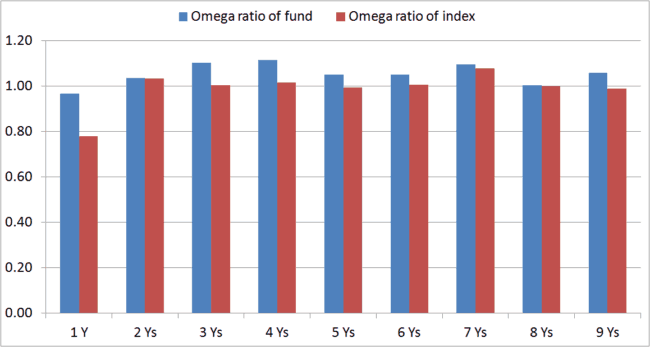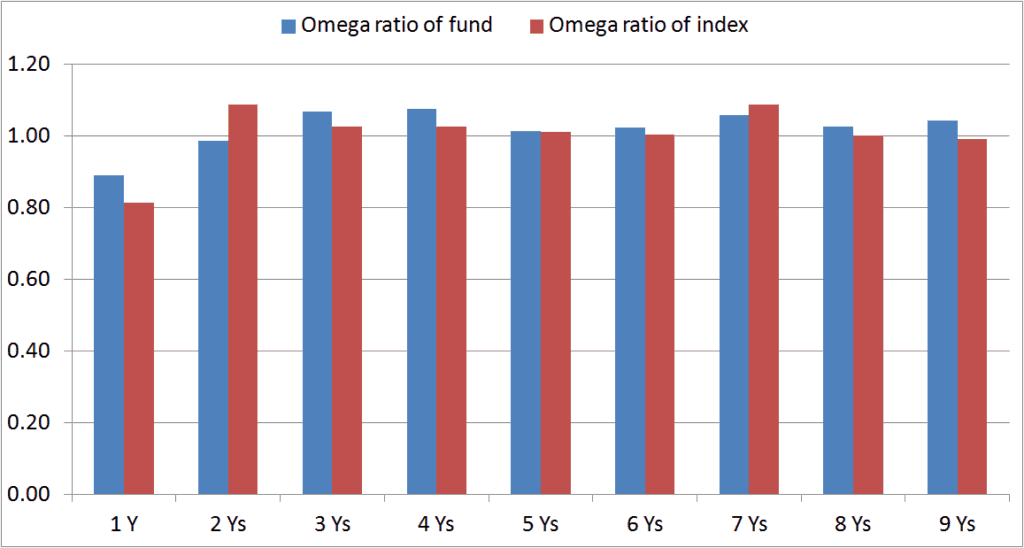Last Updated on June 7, 2016 at 8:50 am
The Omega ratio is an interesting performance evaluation metric that can be used for evaluating a mutual fund with its benchmark and also compare funds. In this post, I present a simple, non-technical description of the omega ratio along with some examples.
The Omega ratio has been part of the mutual Fund risk vs return analyzer since inception. I refer to it as interesting because it is superior to commonly used metrics like the Sharpe and Sortino ratios because it does not require returns (monthly/weekly/daily) returns to fall on a nice bell curve (the which they don’t!). The Omega ratio considers fat tails too.
Although the calculation is quite different, the idea behind the Omega ratio is similar to the downside and upside capture ratios, but at the same time a lot more flexible.
Note: I would like to introduce different risk-return metrics because I am a student of the subject. Please do not confuse my curiosity with investment advice. My aim to learn, create tools and share them here. What you choose to use or not use is up to you.
Join 32,000+ readers and get free money management solutions delivered to your inbox! Subscribe to get posts via email! (Link takes you to our email sign-up form)
🔥Want to create a complete financial plan? Learn goal-based investing? Exclusive access to our DIY tools? Increase your income with your skills? Enjoy massive discounts on our robo-advisory tool & courses! 🔥
To understand what the Omega ratio is, it is important to recall what the downside and upside capture ratios refer to.
Downside capture ratio = Downside CAGR of fund/Downside CAGR of index
Downside CAGR of the fund (or index) is the annualised return by counting only those months/weeks/days when the index return was negative (<0).
A low downside capture ratio implies the fund has lost less than its index when the index did poorly.
Similarly,
Upside capture ratio = Upside CAGR of fund/Upside CAGR of index
Upside CAGR of the fund (or index) is the annualised return by counting only those months/weeks/days when the index return was positive (>0).
A large upside capture ratio implies the fund did better than the index when the index did well.
Capture ratio = Upside capture/Downside Capture
I had purposely indicated the >0 and <0 in bold brown. What if you could your own threshold?
The Omega ratio allows us to do this by setting a minimum acceptable return (MAR) – which could also be 0%!
However, the Omega ratio does not calculate the CAGR. Instead, for a given MAR, it finds how many monthly/weekly/daily returns in a given sample set (over 1,2,… etc years) are above the MAR and how many below.
A positive return is one which is above the MAR and a negative return one below it.
Omega ratio = positive return spread/ negative return spread. The value depends on the MAR chosen by the user.
The value depends on the MAR chosen by the user. For those technically inclined, the spread is actually an area or rather the probability associated with the distribution.
A higher Omega ratio is better. A fund consistently having a higher Omega ratio that its index is a ‘good fund’.
This quantum long-term equity (QLTE) vs Sensex total returns index for an MAR of 10%.
HDFC Equity vs BSE 500 (TRI)* with MAR of 10%. Notice that HDFC Equity has lower Omega ratio than QLTE and is not consistent in beating the benchmark.
* The appropriate benchmark is CNX 500, but the BSE 500 should be a reasonable replacement since TRI values are available.
Resources/References
Article about the Omega ratio from evestment.com
🔥Enjoy massive discounts on our courses, robo-advisory tool and exclusive investor circle! 🔥& join our community of 7000+ users!
Use our Robo-advisory Tool for a start-to-finish financial plan! ⇐ More than 2,500 investors and advisors use this!
Track your mutual funds and stock investments with this Google Sheet!
We also publish monthly equity mutual funds, debt and hybrid mutual funds, index funds and ETF screeners and momentum, low-volatility stock screeners.



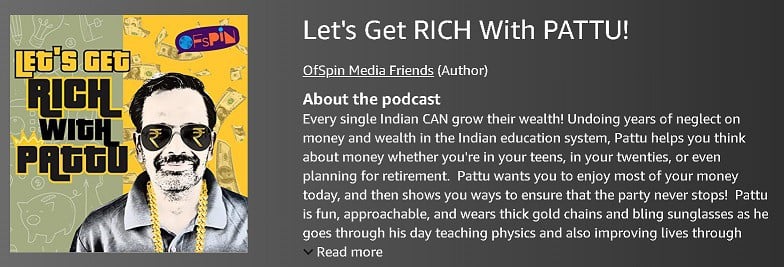

- Do you have a comment about the above article? Reach out to us on Twitter: @freefincal or @pattufreefincal
- Have a question? Subscribe to our newsletter using the form below.
- Hit 'reply' to any email from us! We do not offer personalized investment advice. We can write a detailed article without mentioning your name if you have a generic question.
Join 32,000+ readers and get free money management solutions delivered to your inbox! Subscribe to get posts via email! (Link takes you to our email sign-up form)
About The Author
 Dr M. Pattabiraman(PhD) is the founder, managing editor and primary author of freefincal. He is an associate professor at the Indian Institute of Technology, Madras. He has over ten years of experience publishing news analysis, research and financial product development. Connect with him via Twitter(X), Linkedin, or YouTube. Pattabiraman has co-authored three print books: (1) You can be rich too with goal-based investing (CNBC TV18) for DIY investors. (2) Gamechanger for young earners. (3) Chinchu Gets a Superpower! for kids. He has also written seven other free e-books on various money management topics. He is a patron and co-founder of “Fee-only India,” an organisation promoting unbiased, commission-free investment advice.
Dr M. Pattabiraman(PhD) is the founder, managing editor and primary author of freefincal. He is an associate professor at the Indian Institute of Technology, Madras. He has over ten years of experience publishing news analysis, research and financial product development. Connect with him via Twitter(X), Linkedin, or YouTube. Pattabiraman has co-authored three print books: (1) You can be rich too with goal-based investing (CNBC TV18) for DIY investors. (2) Gamechanger for young earners. (3) Chinchu Gets a Superpower! for kids. He has also written seven other free e-books on various money management topics. He is a patron and co-founder of “Fee-only India,” an organisation promoting unbiased, commission-free investment advice.Our flagship course! Learn to manage your portfolio like a pro to achieve your goals regardless of market conditions! ⇐ More than 3,000 investors and advisors are part of our exclusive community! Get clarity on how to plan for your goals and achieve the necessary corpus no matter the market condition is!! Watch the first lecture for free! One-time payment! No recurring fees! Life-long access to videos! Reduce fear, uncertainty and doubt while investing! Learn how to plan for your goals before and after retirement with confidence.
Our new course! Increase your income by getting people to pay for your skills! ⇐ More than 700 salaried employees, entrepreneurs and financial advisors are part of our exclusive community! Learn how to get people to pay for your skills! Whether you are a professional or small business owner who wants more clients via online visibility or a salaried person wanting a side income or passive income, we will show you how to achieve this by showcasing your skills and building a community that trusts and pays you! (watch 1st lecture for free). One-time payment! No recurring fees! Life-long access to videos!
Our new book for kids: “Chinchu Gets a Superpower!” is now available!


Must-read book even for adults! This is something that every parent should teach their kids right from their young age. The importance of money management and decision making based on their wants and needs. Very nicely written in simple terms. - Arun.Buy the book: Chinchu gets a superpower for your child!
How to profit from content writing: Our new ebook is for those interested in getting side income via content writing. It is available at a 50% discount for Rs. 500 only!
Do you want to check if the market is overvalued or undervalued? Use our market valuation tool (it will work with any index!), or get the Tactical Buy/Sell timing tool!
We publish monthly mutual fund screeners and momentum, low-volatility stock screeners.
About freefincal & its content policy. Freefincal is a News Media Organization dedicated to providing original analysis, reports, reviews and insights on mutual funds, stocks, investing, retirement and personal finance developments. We do so without conflict of interest and bias. Follow us on Google News. Freefincal serves more than three million readers a year (5 million page views) with articles based only on factual information and detailed analysis by its authors. All statements made will be verified with credible and knowledgeable sources before publication. Freefincal does not publish paid articles, promotions, PR, satire or opinions without data. All opinions will be inferences backed by verifiable, reproducible evidence/data. Contact information: To get in touch, use this contact form. (Sponsored posts or paid collaborations will not be entertained.)
Connect with us on social media
- Twitter @freefincal
- Subscribe to our YouTube Videos
- Posts feed via Feedburner.
Our publications
You Can Be Rich Too with Goal-Based Investing
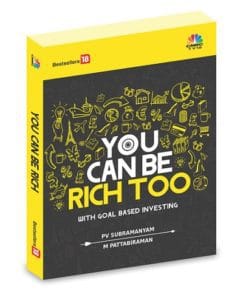 Published by CNBC TV18, this book is meant to help you ask the right questions and seek the correct answers, and since it comes with nine online calculators, you can also create custom solutions for your lifestyle! Get it now.
Published by CNBC TV18, this book is meant to help you ask the right questions and seek the correct answers, and since it comes with nine online calculators, you can also create custom solutions for your lifestyle! Get it now.Gamechanger: Forget Startups, Join Corporate & Still Live the Rich Life You Want
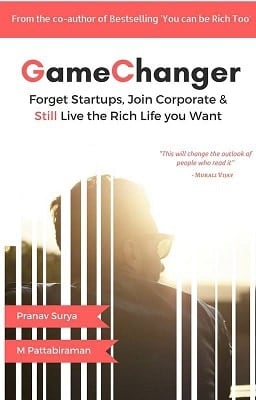 This book is meant for young earners to get their basics right from day one! It will also help you travel to exotic places at a low cost! Get it or gift it to a young earner.
This book is meant for young earners to get their basics right from day one! It will also help you travel to exotic places at a low cost! Get it or gift it to a young earner.Your Ultimate Guide to Travel
 This is an in-depth dive into vacation planning, finding cheap flights, budget accommodation, what to do when travelling, and how travelling slowly is better financially and psychologically, with links to the web pages and hand-holding at every step. Get the pdf for Rs 300 (instant download)
This is an in-depth dive into vacation planning, finding cheap flights, budget accommodation, what to do when travelling, and how travelling slowly is better financially and psychologically, with links to the web pages and hand-holding at every step. Get the pdf for Rs 300 (instant download)